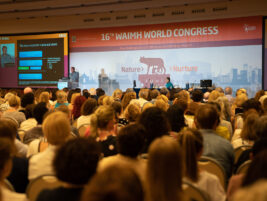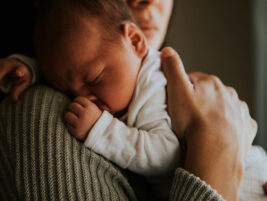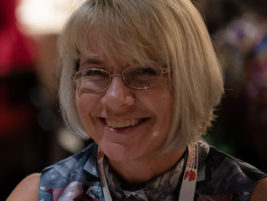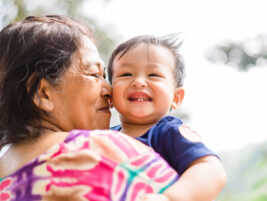Introducing new ideas and concepts into well-established and often rigid systems, is a task that most of us, as infant clinicians, have been faced with, each within his or her own country and health or mental health facilities or networks. Indeed, the idea that infants perceive, understand and react to their surroundings, is so obvious to us, and still so strange to many of our colleagues, especially whatever discipline they come from “Well, he’s too young to understand,” is still a very common statement among many lay people and professionals.
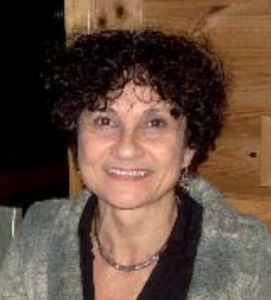
Each of the papers in this issue describes how this “obsession” of ours, pushes us to represent the infant (The French psychoanalyst would say “Talk the infant”) in contexts where his/her emotional needs are at potential risk. The context may be a natural catastrophe, such as the Haiti earthquake; a society where psychological thinking is just starting to grow, such as in Latvia or Hungary; or even an orphanage where the adults’ needs predominate. Although the contexts are different, the idea is the same: to introduce and disseminate our understanding of infant mental health, by “talking about the infant”.
Our challenge is not only to share knowledge, but also to hold the infant in our minds, so that the question, “Hey, what about the infants?” should be automatic, whenever we hear about severe and adverse events hitting communities. For instance, we could not take for granted that the trauma experienced by Haitian infants would be considered after the earthquake. If the child psychiatrist, Marie Rose Moro, did not have “babies in her mind,” I wonder whether the medical force from “Physicians without Borders” would have thought about them as a target population at risk for developing post-traumatic reactions. More often than not, we cannot count on health policy leaders to initiate actions on behalf of babies following a traumatic event. We have to remind them to think about the infants’ psychosocial needs. We are definitely the ones who represent them.
In order to do so, we do not necessarily need to work for big changes in systems or infrastructures. We can speak for the babies as individual situations arise. I had occasion to do this two months ago when a huge fire spread over the Carmel forest in Israel and people were evacuated from their houses in the middle of the night. In the midst of thick smoke and red blazes, police spokesmen shouted in the streets: “Life is in danger, life is in danger, you must leave your house immediately!”. The media described how Hebrew-speaking Ethiopian children woke up their non-Hebrew speaking parents and how Holocausts survivors re-experienced the smell of the smoke. Some were found by the firemen holding old suitcases, re-traumatized, as if ready to go to the camp. Obviously, no one mentioned infants’ reactions to the trauma experienced by the fire. I, together with the local child psychiatrist, called the director of the Early Childhood Center of the town that had been the most exposed, to ask her whether measures had been taken to detect those infants and parents at risk for developing post-traumatic symptoms. Her reaction was of keen surprise mixed with a bit of guilt. She said, “I did not even think about it. I thought about the school children and the adolescents…though I work with toddlers myself!” The next step was quite simple. She and I met and we formulated an easy to use questionnaire to screen for symptoms of post-traumatic stress disorder (PTSD) in both the infants and their parents, to be distributed in the Well Baby centers where all Under Three’s come for immunizations and developmental follow up. An indirect, yet immediate, effect was the community health professionals’ request to have more information about PTSD in infancy. They realized that the main reason for not having thought about it was the fact that they did not know what a post-traumatic stress disordered infant looks like.
Talking about or representing the baby is not always that easy; the resistance we often face is very well described in Grigoris Abazoglou’s paper. He, like the Latvian Infant Mental Health team, had to find creative ways to introduce basic concepts, such as attachment. I was just talking the other day, with Zack Boukydis, who reviewed the book about T. Berry Brazelton for this issue of The Signal, and who has recently moved to Budapest. He told me how much he needs to start from zero to convince the local neonatal care unit staff of the real need to give psychological counseling and support to the premature babies’ parents, to work through the traumatic delivery and the stay at the neonatal care nursery.
I believe these difficulties we face when speaking about the psychological needs of infants to other professionals and health policy makers, do not come only from a lack of knowledge. No matter how much evidence-based information we bring them, we often face a basic resistance to the idea that infants do develop psychopathology when not cared well enough by their caregivers, and do develop post traumatic reactions with long term impact on their development when faced with traumatic experiences, directly or indirectly. , . Many adults with whom we speak have never thought about the infant in these ways before. We, as individual clinicians as well as members of WAIMH, seem to be the ones who can mediate between them and the infants.
Authors
Kerne, Miri, M.D.,
the Editor of Signal,
Israel




